Top Gaming Monitors for All Gamers
A gaming monitor is an essential accessory that maximizes the stunning graphics and high refresh rates your gaming PC can deliver. Why spend on a top-tier graphics card and CPU if your display can't keep up? That's why we've curated a list of the best gaming monitors, ensuring crisp visuals and smooth gameplay for your favorite PC games.
TL;DR – These Are the Best Gaming Monitors:
 Our Top Pick### Gigabyte FO32U2 Pro
Our Top Pick### Gigabyte FO32U2 Pro
6See it at AmazonSee it at Newegg ### AOC Q27G3XMN Mini-LED Gaming Monitor
### AOC Q27G3XMN Mini-LED Gaming Monitor
2See it at Amazon ### Acer Predator X34 OLED
### Acer Predator X34 OLED
0See it at AmazonSee it at B&H  ### Dell Alienware AW2725Q
### Dell Alienware AW2725Q
1See it at Dell ### Asus ROG Swift PG27AQDP
### Asus ROG Swift PG27AQDP
0See it at Newegg ### Asus TUF Gaming VG279QM
### Asus TUF Gaming VG279QM
1See it at AmazonYour gaming monitor should complement your PC's capabilities; there's no point in investing in a top-tier 4K monitor if your games struggle to run smoothly on a GeForce RTX 4060 at that resolution. Conversely, pairing a high-end Radeon RX 7900 XTX with a 1080p display underutilizes its potential. The best gaming monitors showcase your rig's full potential, delivering excellent picture quality, rapid response times, and a suite of gaming-enhancing features. High refresh rates ensure smooth gameplay, which can be critical for competitive gamers.
Whether you're seeking a future-proof option with a sharp 4K OLED display and a 240Hz refresh rate like our top pick, the Gigabyte FO32U2 Pro, or a budget-friendly monitor for a more modest setup, we've got you covered. Our favorite gaming monitors have been thoroughly vetted to meet various needs and budgets.
Looking for savings? Check out the best gaming monitor deals currently available.
Gigabyte Aorus FO32U2 Pro – Photos
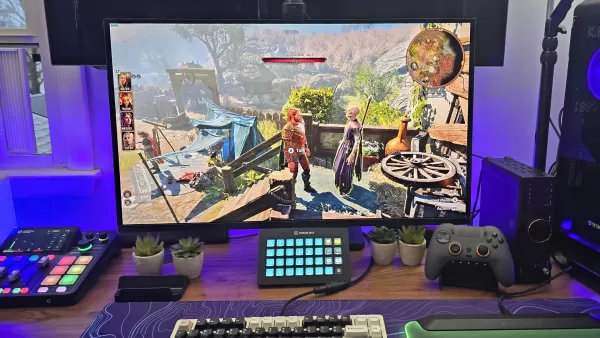
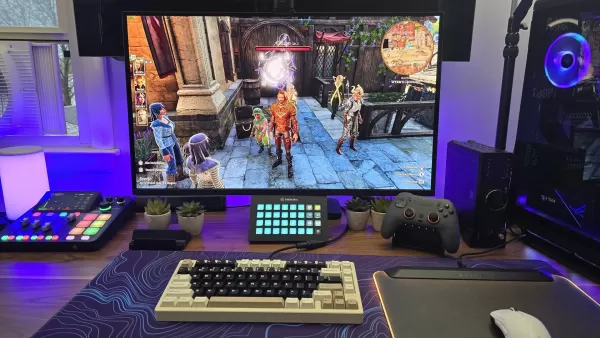 13 Images
13 Images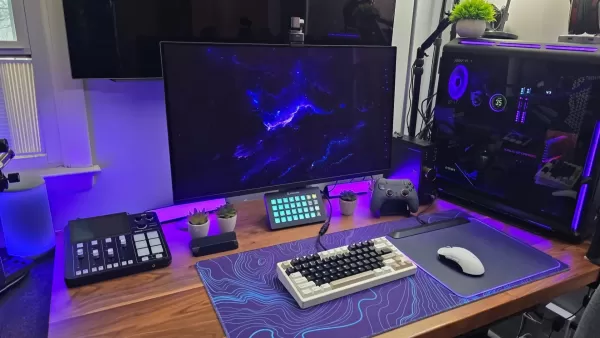


 1. Gigabyte FO32U2 Pro
1. Gigabyte FO32U2 Pro
Best Gaming Monitor
 Our Top Pick### Gigabyte FO32U2 Pro
Our Top Pick### Gigabyte FO32U2 Pro
6This stunning monitor excels in every aspect, thanks to its feature-rich design and OLED panel technology.See it at AmazonSee it at NeweggProduct SpecificationsScreen size31.5"Aspect ratio16:9Resolution3840x2160Panel typeOLEDHDR compatibilityHDR TrueBlack 400Brightness1,000 nitsRefresh rate240HzResponse time0.03msInputs2 x HDMI 2.1, 1 x DisplayPort 1.4PROSOutstanding picture qualityExtremely thin panelCONSExpensiveIf you need evidence that OLED is becoming the standard for top gaming monitors, look no further than the Gigabyte FO32U2 Pro. This 32-inch 4K monitor boasts an exceptionally slim profile and one of the brightest displays I've tested. While it's on the pricier side, the investment is justified by its exceptional performance.
This monitor is built for the future. Although current top graphics cards struggle to maintain 240Hz at 4K, the Gigabyte Aorus FO32U supports this high refresh rate, ensuring longevity. It even supports DisplayPort 2.1, a feature not yet common in current-generation PCs.
The OLED panel delivers unparalleled color accuracy, covering up to 99% of the DCI-P3 color gamut. With a peak brightness of 1,000 nits and a contrast ratio of 1.5M:1, everything from games to movies appears vibrant and lifelike.
As a flagship model, it includes practical features like picture-in-picture and an automatic black equalizer. The Gigabyte Control Center allows you to adjust settings via a USB connection, enhancing user convenience.
This is a premium gaming monitor that offers exceptional value for its cost.
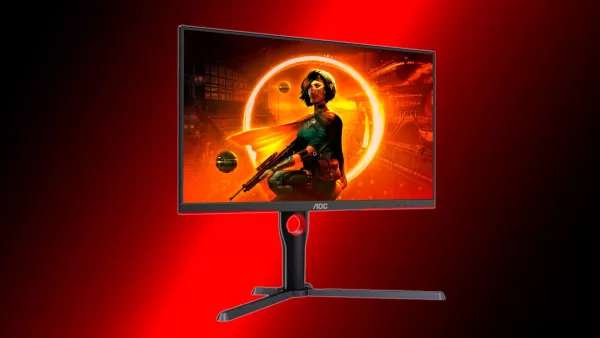 2. AOC Q27G3XMN Mini-LED
2. AOC Q27G3XMN Mini-LED
Best Budget Gaming Monitor
 ### AOCQ27G3XMN Mini-LED Gaming Monitor
### AOCQ27G3XMN Mini-LED Gaming Monitor
0With QHD resolution, 1440p, a high refresh rate, and mini-LED backlight for true HDR, this monitor is a steal at its current price!See it at AmazonProduct SpecificationsScreen size27"Aspect ratio16:9Resolution2560x1440Panel typeVAHDR compatibilityHDR1000Brightness1,000 nitsRefresh rate180HzResponse time1ms (GTG)Inputs1 x DisplayPort 1.4, 2 x HDMI 2.0, 1 x 3.5mm AudioPROSMini-LED backlight technologyHigh refresh rate for improved responsiveness and decreased motion blurPeak brightness of 1,000 nits for true HDRCONSNo USB connectivityLimited local dimming zonesThe AOC Q27G3XMN Gaming Monitor offers a true HDR gaming experience at a budget-friendly price. Its mini-LED backlight enhances brightness and contrast up to 1,000 nits, providing a full HDR experience.
This monitor features a VA panel, which delivers improved contrast even without local dimming. With 336 local dimming zones, it can highlight shadows and blacks better than typical edge-lit monitors, making it a cost-effective choice.
Even without the mini-LED backlight, this monitor is an excellent pick for budget-conscious gamers. Its 27-inch size is well-suited for 1440p resolution, offering crisp visuals and smooth gameplay. Though it lacks some features like built-in speakers or a USB hub, its affordable price and gaming performance make up for these omissions.
AOC made a trade-off to keep the price low: fewer local dimming zones. While 336 zones are substantial, flagship mini-LED monitors often have over 1,100. This can result in noticeable blooming around bright objects on dark backgrounds, though many users adjust to it over time.
Despite this, the AOC Q27G3XMN mini-LED gaming monitor provides impressive visuals and is well worth considering.
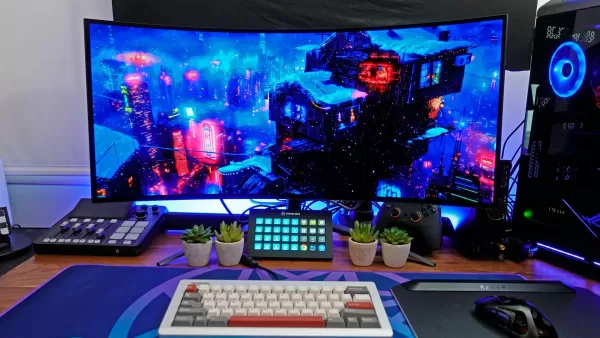 3. Acer Predator X34 OLED
3. Acer Predator X34 OLED
Best Ultrawide Gaming Monitor
 ### Acer Predator X34 OLED
### Acer Predator X34 OLED
0With its expansive 34-inch 21:9 display, the Acer Predator X34 OLED meets every expectation for a top-tier gaming monitor. See it at AmazonSee it at B&H Product SpecificationsScreen size34Aspect ratio21:9Resolution3440x1440Panel typeOLEDHDR compatibilityVESA DisplayHDR True Black 400Brightness1,300 cd/m2 (peak)Refresh rate240HzResponse time0.03msInputs2 x HDMI 2.1, 1 x DisplayPort 1.4, 2 x USB 3.2 Gen 2 Type-CPROSDeep blacks and bright highlightsRich, engaging colorsExcellent refresh rate and response timeOffers an immersive gaming experience CONSDeep curvature isn't for everyoneOnly reference preset is DCI-P3, not sRGBThe Acer Predator X34 OLED is my top recommendation for an ultrawide gaming monitor in 2025. Its 34-inch 21:9 display, combined with its advanced features, makes it a standout choice. It's bright, fast, immersive, and visually stunning.
This model features a deeply curved OLED display with an 800R curvature, which significantly enhances immersion. While great for gaming, the deep curve may cause slight text distortion, which can take time to get used to and may not be ideal for productivity.
Like other OLED monitors, it boasts an incredibly fast 0.03ms response time, unmatched by IPS, VA, or TN panels. At a 240Hz refresh rate, it delivers virtually no input latency, ideal for competitive gaming.
OLED monitors are known for their excellent picture quality, and the Acer Predator X34 OLED is no exception. With a peak brightness of 1,300 nits, it offers lifelike highlights and deep blacks.
One notable drawback is the absence of an sRGB mode for content creation, despite its wide color gamut and quality factory calibration. However, it does feature a DCI-P3 mode, suitable for digital artists.
Alienware AW2725Q - Photos
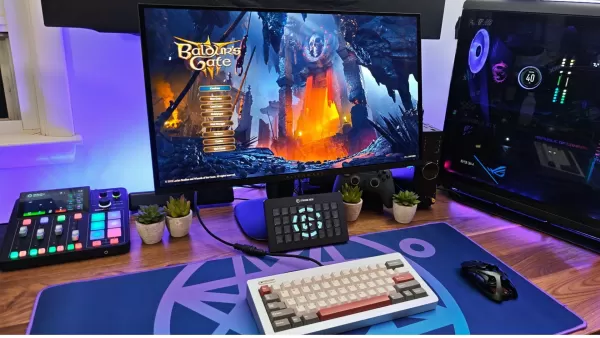
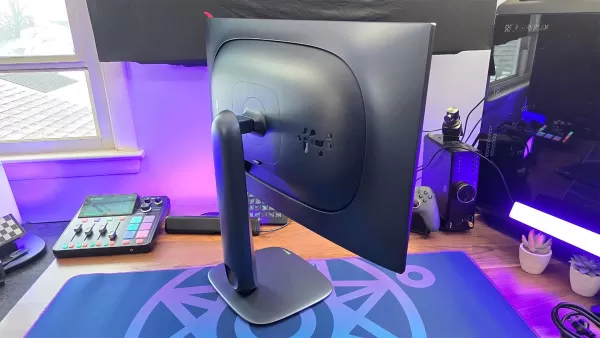 15 Images
15 Images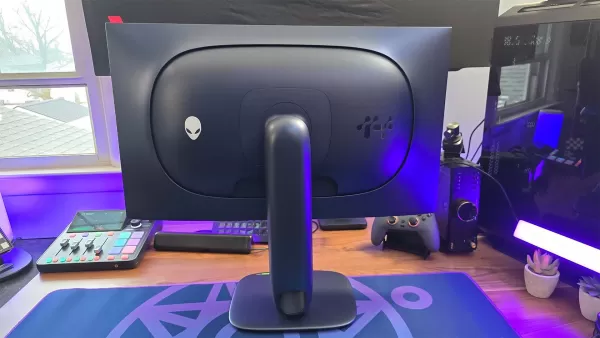
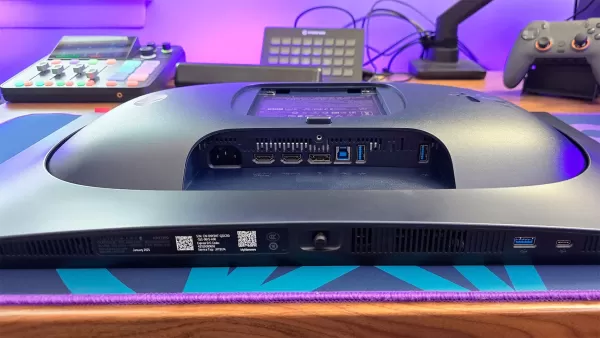
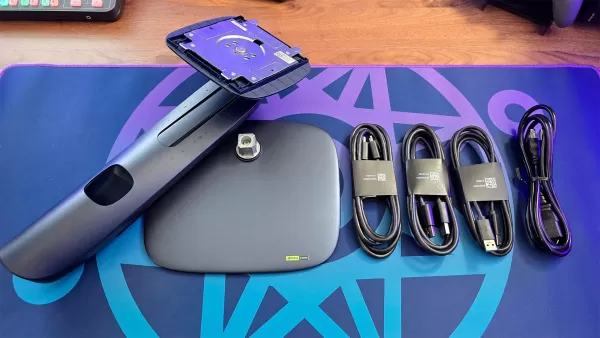
 4. Dell Alienware AW2725Q
4. Dell Alienware AW2725Q
Best 4K Gaming Monitor
 ### Dell Alienware AW2725Q
### Dell Alienware AW2725Q
1The Dell Alienware AW2725Q offers great value among high-end gaming monitors, with support for Dolby Vision and a console-friendly design. See it at DellProduct SpecificationsScreen size26.7"Aspect ratio16:9Resolution3840x2160Panel typeQD-OLEDHDR compatibilityVESA DisplayHDR True Black 400Brightness1,000 nitsRefresh rate240HzResponse time0.03msInputs2 x HDMI 2.1, 1 x DisplayPort 1.4, 3 x USB 3.2 Gen 1 Type-A, 1 x USB 3.2 Gen 1 Type-CPROSGorgeous picture with high PPI for improved clarityImpressive color accuracy right out of the boxGood value for what it offersCONSLow SDR brightnessLacks DisplayPort 2.1The Dell Alienware AW2725Q is a top choice for those seeking stunning visuals and performance at 4K. It features an upgraded QD-OLED panel and a faster 240Hz refresh rate compared to its predecessor. The design is sleek and fits well with various gaming setups.
At 27 inches, this monitor provides a high pixel density of 166PPI, ensuring crisp and clear details. Its OLED panel delivers vibrant colors and outstanding image quality, enhanced by VESA DisplayHDR True Black 400 certification and Dolby Vision HDR.
During my review, the Alienware AW2725Q impressed with its picture quality. It offers various preset modes for both SDR and HDR, along with RGB and saturation controls for customization. It's also well-calibrated out of the box, which is a boon for content creators.
The monitor's SDR brightness is not as high as some might prefer, but it performs well indoors and can reach 1,000 nits in HDR mode. With a 0.03ms response time and 240Hz refresh rate, it's ideal for fast-paced, competitive gaming.
It supports DisplayPort 1.4, not the newer DP 2.1, which may require Display Stream Compression for full resolution and refresh rate. However, this is visually lossless and should not impact most users.
Priced at $899 at launch, it offers solid value and is expected to become more affordable over time.
Asus ROG Swift OLED PG27AQDP – Photos
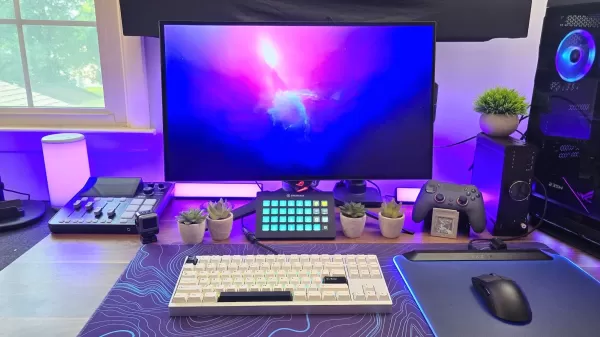
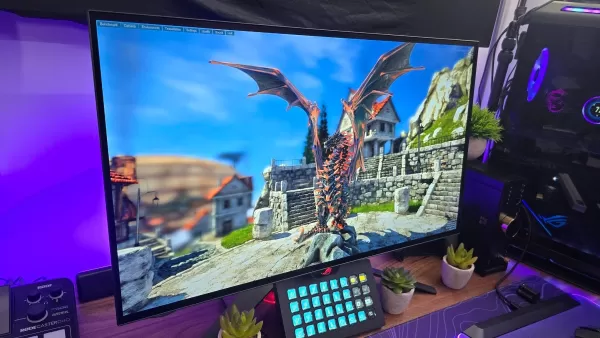 19 Images
19 Images


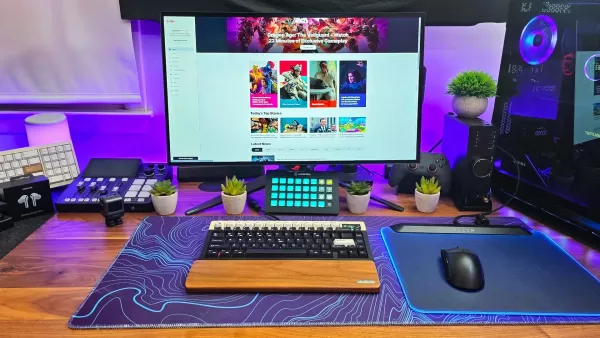 5. Asus ROG Swift PG27AQDP
5. Asus ROG Swift PG27AQDP
Best 1440p Gaming Monitor
 ### Asus ROG Swift PG27AQDP
### Asus ROG Swift PG27AQDP
0The Asus ROG Swift PG27AQDP is an outstanding gaming monitor that meets all the needs of competitive gamers. See it at NeweggProduct SpecificationsScreen size26.5Aspect ratio16:9Resolution2560 x 1440Panel typeOLED FreeSync Premium, G-Sync CompatibleHDRVESA DisplayHDR True Black Brightness1,300 cd/m2 (peak)Refresh rate480HzResponse time 0.03msInputs2 x HDMI 2.1, 1 x DisplayPort 1.4, 2 x USB 3.2 Gen 2 Type-A, HeadphonesPROSPerfectly sized for 1440pCan get exceptionally bright and infinitely dark for great HDRNative 480Hz refresh rateOut of the box color accuracyCONSFew games, outside of esports, will ever hit 480HzThe Asus ROG Swift PG27AQDP is the top choice for 1440p gaming, particularly for esports enthusiasts. Priced competitively, it offers exceptional HDR performance and out-of-the-box color accuracy.
Its standout feature is the 480Hz refresh rate, nearly matching the fastest gaming monitors available. This high refresh rate, combined with the OLED panel's superior picture quality, makes it a top pick for gamers seeking both speed and visual excellence.
The monitor's display is breathtaking, with rich colors and infinite contrast. Whether gaming, watching movies, or viewing content, the experience is consistently impressive.
The fast refresh rate and 0.03ms response time virtually eliminate motion blur, offering a significant advantage in fast-paced games.
This monitor also includes advanced OLED protection features, such as pixel shifting, pixel refresh cycles, and dynamic dimming to prevent image retention. It's backed by a three-year warranty with burn-in coverage, ensuring peace of mind.
While it lacks a KVM or USB video input, the Asus ROG Swift PG27AQDP remains a top choice for its performance and features.
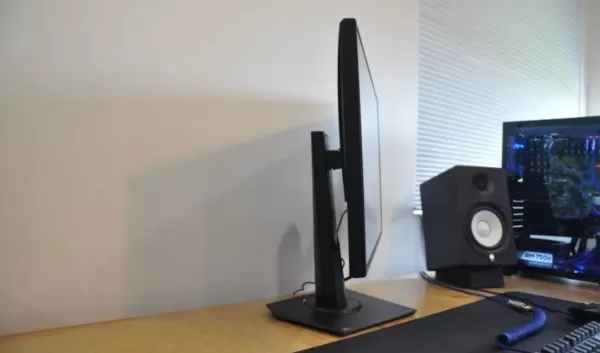 Adjustable stand on the Asus TUF Gaming VG279QM6. Asus TUF Gaming VG279QM
Adjustable stand on the Asus TUF Gaming VG279QM6. Asus TUF Gaming VG279QM
Best 1080p Gaming Monitor
 ### Asus TUF Gaming VG279QM
### Asus TUF Gaming VG279QM
1This 27-inch Full HD monitor features an overclockable 240Hz refresh rate, low input lag, and adaptive sync for smooth gameplay. See it at AmazonProduct SpecificationsScreen size27"Aspect ratio16:9Resolution1,920 x 1,080Panel typeIPS FreeSync, G-Sync compatibleBrightness400cd/m2Refresh rate240Hz, 280Hz (OC)Response time1ms (GtG)Inputs2 x HDMI 2.0, 1 x DisplayPort 1.2PROSBudget priceExcellent motion handlingCONSSome pixel peeping1080p monitors still have a place in gaming, and the Asus TUF Gaming VG279QM is a prime example. For under $300, it offers an overclockable 240Hz refresh rate, a 1ms response time, and low input lag for smooth gameplay. FreeSync and G-Sync compatibility ensure tear-free visuals.
This monitor stretches its 1080p resolution across a 27-inch screen, providing an immersive experience. While some pixel peeping may occur, the IPS panel offers good viewing angles and color reproduction. With a brightness of 400 nits and DisplayHDR 400 certification, it's suitable for various lighting conditions, though HDR performance is limited.
Additional features include a height-adjustable stand and multiple connectivity options, making it a great value for budget-conscious gamers.
AnswerSee Results How to Choose a Gaming MonitorChoosing the right gaming monitor involves considering several key factors: screen size, resolution, panel type, and aspect ratio. Here's a detailed guide to help you make an informed decision:
Screen size: The first consideration is size. Whether you're in a small space or looking for a monitor that can double as a TV, your environment will dictate the appropriate size. For 1080p, up to 27 inches is ideal; for 1440p, 27 to 32 inches; and for 4K, 32 inches or larger depending on viewing distance.
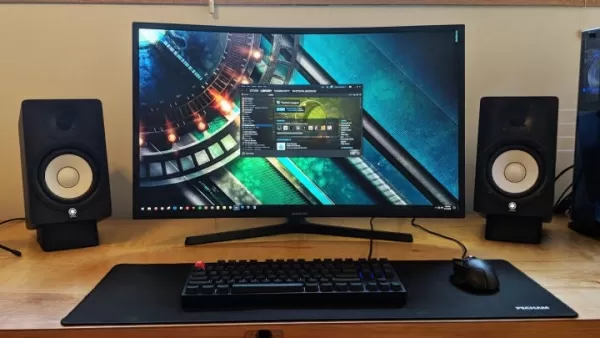 Aspect ratio: Most monitors have a 16:9 aspect ratio, suitable for widescreen gaming. Ultrawide monitors with a 21:9 ratio offer a cinematic experience, while the newest 32:9 displays provide even more immersive gaming.
Aspect ratio: Most monitors have a 16:9 aspect ratio, suitable for widescreen gaming. Ultrawide monitors with a 21:9 ratio offer a cinematic experience, while the newest 32:9 displays provide even more immersive gaming.
Screen resolution: Resolution determines image sharpness. Options include Full HD (1920x1080), Quad HD (2560x1440), and Ultra HD or 4K (3840x2160). Higher resolutions require more powerful graphics cards to maintain high frame rates.
Panel type: Different panel types offer varying benefits. TN panels are outdated and should be avoided. IPS panels offer excellent color reproduction and wide viewing angles, with response times around 3-5ms. VA panels provide better contrast and slightly quicker response times but may exhibit ghosting. Mini-LED and OLED panels are the premium choices, with OLED offering the best contrast and HDR performance, though they can be susceptible to burn-in.
 Response time: For competitive gaming, a 1ms response time is ideal. For most other games, 3-5ms is sufficient. OLED panels offer the fastest response times at 0.03ms, paired with high refresh rates for the lowest input latency.
Response time: For competitive gaming, a 1ms response time is ideal. For most other games, 3-5ms is sufficient. OLED panels offer the fastest response times at 0.03ms, paired with high refresh rates for the lowest input latency.
Refresh rate: Refresh rate determines how often the screen updates, affecting gameplay smoothness. Standard monitors offer 60Hz, but gaming monitors often feature 120Hz, 144Hz, 240Hz, or higher. Higher refresh rates are advantageous in fast-paced games.
 G-Sync vs FreeSync: Variable refresh rate (VRR) technologies like Nvidia G-Sync and AMD FreeSync synchronize your monitor's refresh rate with your GPU's frame rate, preventing screen tearing. G-Sync requires specific hardware, while FreeSync is more widely compatible.
G-Sync vs FreeSync: Variable refresh rate (VRR) technologies like Nvidia G-Sync and AMD FreeSync synchronize your monitor's refresh rate with your GPU's frame rate, preventing screen tearing. G-Sync requires specific hardware, while FreeSync is more widely compatible.
Ensure your graphics card can handle the monitor's resolution and refresh rate to avoid underutilizing your investment.
Gaming Monitor vs. Gaming TV: Which Is Best for You?
Choosing between a gaming monitor and a gaming TV depends on your gaming preferences. TVs often excel in brightness, contrast, and color due to OLED or mini-LED technology, and can handle HDR content well at a lower cost. However, monitors typically offer lower input lag, higher refresh rates, and better pixel response times, crucial for competitive gaming.
Monitors are generally more budget-friendly and offer more gaming-specific features. TVs, while larger, may lack important features for PC use, such as standby modes to prevent burn-in, and often have fixed stands that may not be ideal for desk setups.
Size is a significant factor; monitors larger than 43 inches are rare, and TVs offer a larger screen for a more immersive experience when gaming from a distance.
Gaming Monitor FAQ
What's the difference between Nvidia G-Sync and AMD FreeSync?
Both technologies use VRR to synchronize the monitor's refresh rate with the frame rate of your PC or console. Most FreeSync displays are G-Sync compatible, and vice versa. Nvidia offers G-Sync Compatible, G-Sync, and G-Sync Ultimate tiers, while AMD has FreeSync, FreeSync Premium, and FreeSync Premium Pro, each with different features and performance levels.
What’s the best resolution for a gaming monitor?
The best resolution depends on your needs. For high refresh rates and budget-friendly options, 1080p is suitable. For crisp visuals, 4K is ideal, but requires a powerful graphics card. 1440p offers a balanced compromise, providing sharp images and high frame rates with a mid-range GPU.
Is HDR worth it?
HDR enhances color, brightness, and contrast, making games more visually appealing. True HDR starts at 1000 nits of peak brightness, but even monitors with 600 nits can offer a wider color gamut. OLED and Mini-LED panels deliver the best HDR experience, while many monitors claiming HDR support may only offer HDR compatibility.
When is the best time to get a gaming monitor?
Gaming monitors can be pricey, so consider purchasing during sales events like Amazon Prime Day, Black Friday, or Cyber Monday. Also, keep an eye on new product announcements from major brands, as older models often go on sale.









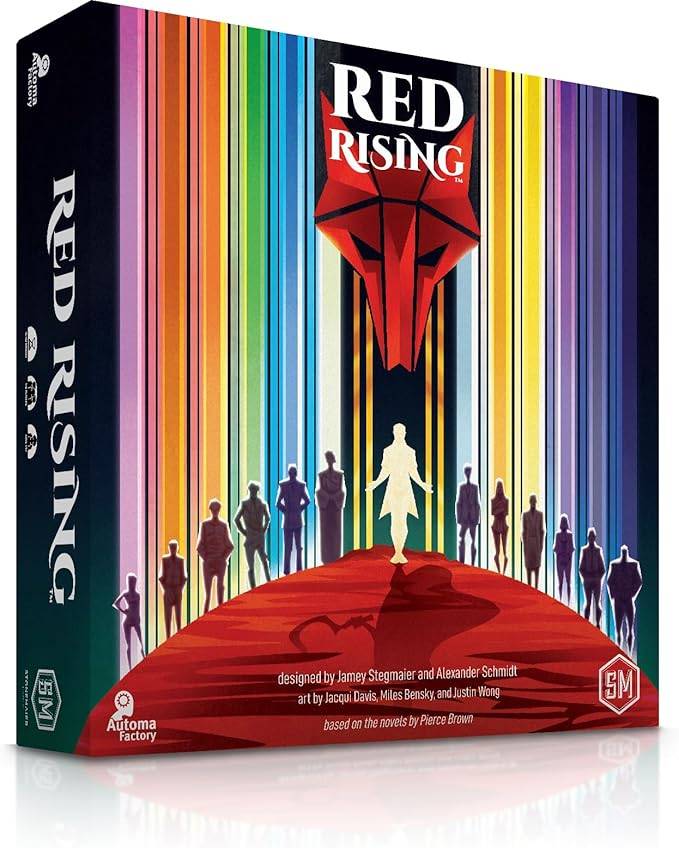













![FurrHouse [Ch. 3]](https://images.dshu.net/uploads/30/1719555089667e54115d59f.jpg)




